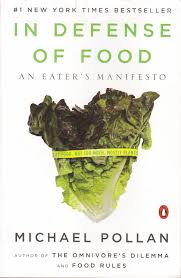
June is strawberry month. Some strawberries even have the name “June-bearing”; others are everbearing. (Better than overbearing!) But they all start in June.
1. Strawberries1 contain numerous trace minerals and vitamins including 71% of RDA* for Vitamin C, 18% of manganese, and 6% of folate.
2. Strawberries are 90% water and therefore, low in calories with just 33 calories in 100 grams. They make a satisfying snack.
3. Strawberries are also rife with phytonutrients, microscopic substances that have anti-inflammatory or anticancer properties. Their brilliant red colour contributes to their healthiness.
4. Strawberries are high in fibre, rivaling whole grains with their yummy taste. Strawberry consumption is associated with a decreased risk of cardiovascular disease.
Sadly, strawberries are among the most heavily sprayed crops. With reportedly up to 90 chemicals, they routinely make the Environmental Working Group’s Dirty Dozen2, 3 list of the most contaminated produce. Chemical sprays harm the soil, the water, the workers in the fields and the eaters of the fruit, including my grandchildren!
Grow your own strawberries easily. When they’re not part of a huge monoculture (fields and fields of the same plant), they suffer from few diseases. Birds and other creatures like to eat strawberries so you may need to cover them with nets to get your share. They self-propagate profusely so you can share plants with others and you can constantly rotate your beds.
If you can’t grow your own strawberries, I highly recommend buying organic. They cost more but you will immediately notice that they have more taste than the sprayed strawberries. I read recently that people who think they are allergic to strawberries are often actually allergic to chemicals used specifically on strawberries.
In our area there are a number of U-Pick strawberry growers. Picking berries is a fun family activity but I suggest you inquire about spraying before you expose your kids to the fields.
Remember that strawberries don’t ripen after they’re picked so choose bold red berries. They should be washed just before eating to prevent mold. They keep just a few days in the fridge. It’s rarely a problem for me as I will eat them for breakfast, lunch, dinner and everything in between!
Strawberries are delicious eaten plain. You can add some cream or coconut milk with a bit of honey, maple syrup or coconut sugar.
Strawberries freeze well. Soft berries can be pureed into sauces for desserts, added to smoothies or even added to sparkling water for a refreshing summer beverage.
My grandtoys and I invented “Fruities”, fruit “puddings”, which are really delicious when made with strawberries. It’s a great way to use less than perfect berries. See recipe.
Summer starts with strawberries. Savour some soon!
Beware of artificial strawberry flavoured products. Personally, I’ve never cared for artificial strawberry flavour. Now that I know that it comes from the anal glands of beavers, I am even less inclined to eat fake strawberry products.
*Recommended Daily Allowance: the amount of a nutrient you need to stay alive; you need more for optimum health!
1. http://en.wikipedia.org/wiki/Strawberries
2. www.EWG.org Environmental Working Group
3. http://www.wholerealfood.com/dirty-dozen-2013-edition/

